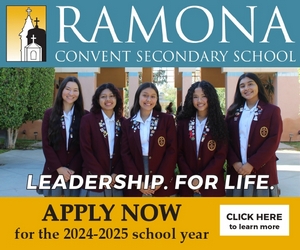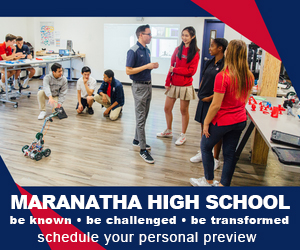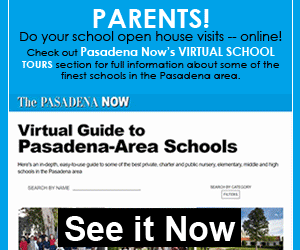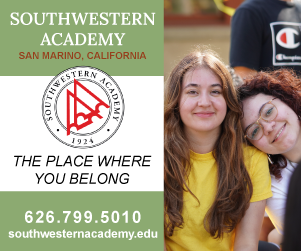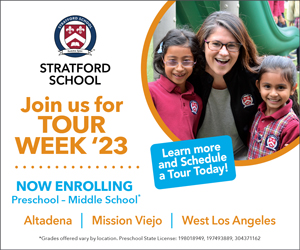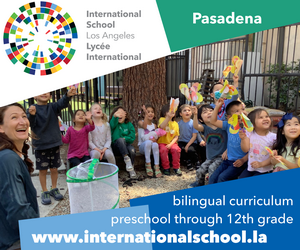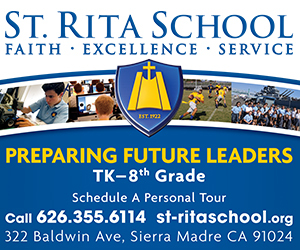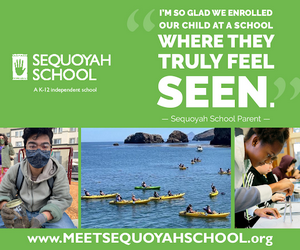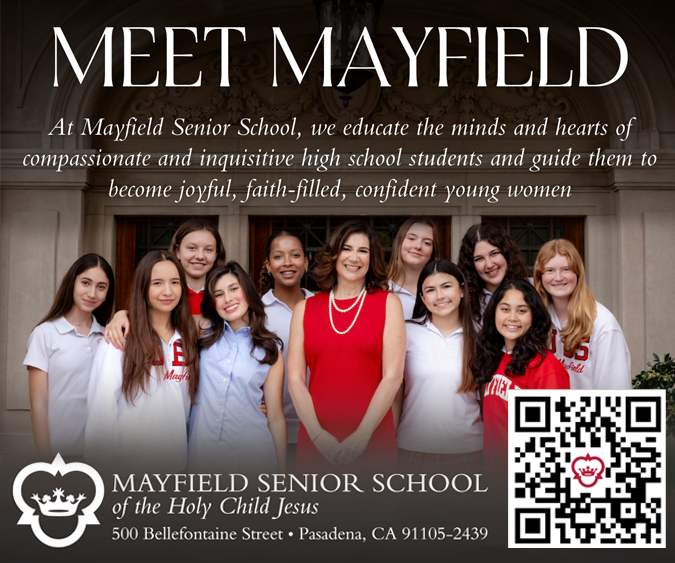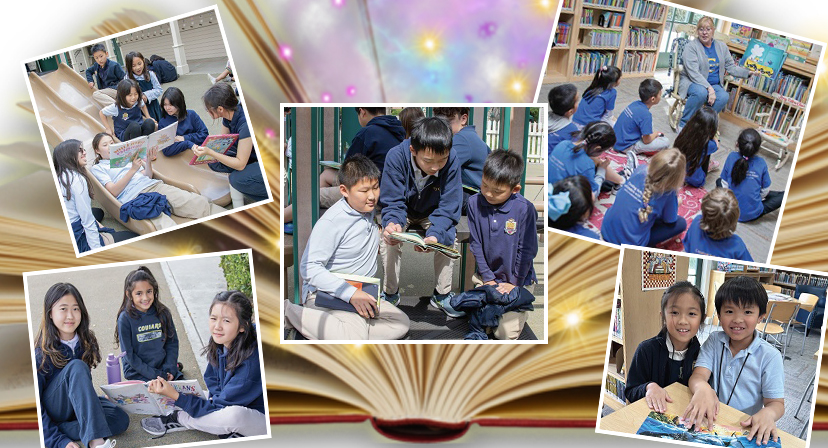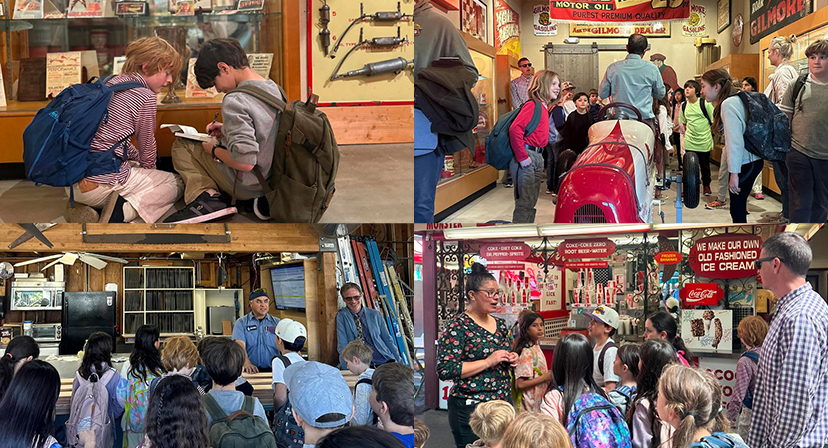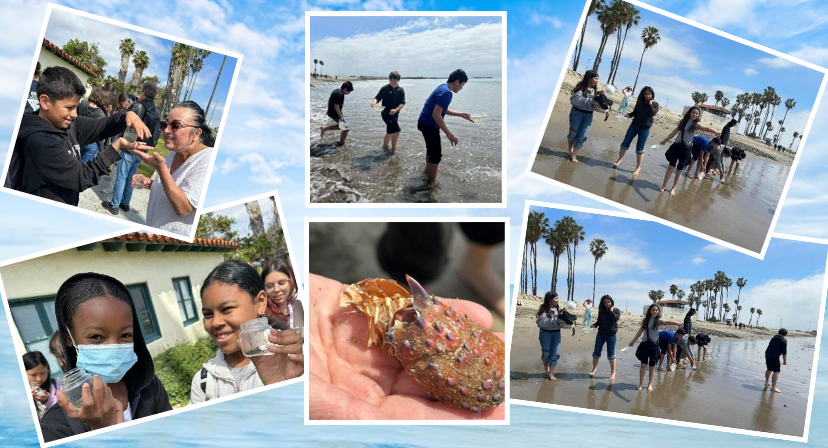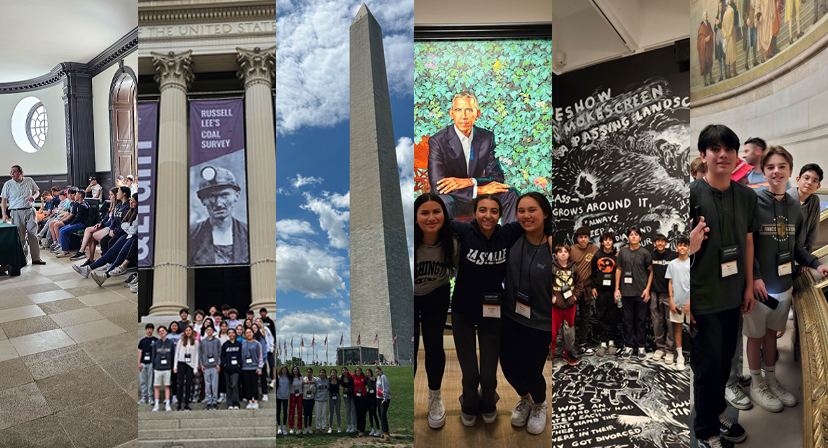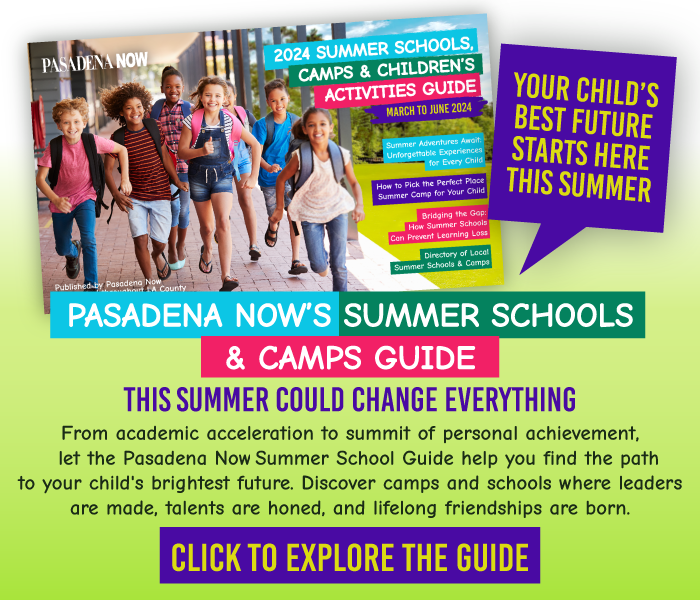The Pioneer Experience: Clairbourn’s Third Grade Oregon Trail Adventure
 History is recreated every year by Clairbourn third-graders studying the Oregon Trail and the early pioneers. This cooperative learning activity is filled with academic challenges as well as plenty of excitement and fun. To set the foundation, students read If You Traveled West In A Covered Wagon, by Ellen Levine and Elroy Freemand, and watch several videos on pioneers which provide them with an overview of the life, hardships, and strange new experiences of pioneer families as they travelled on the Oregon Trail.
History is recreated every year by Clairbourn third-graders studying the Oregon Trail and the early pioneers. This cooperative learning activity is filled with academic challenges as well as plenty of excitement and fun. To set the foundation, students read If You Traveled West In A Covered Wagon, by Ellen Levine and Elroy Freemand, and watch several videos on pioneers which provide them with an overview of the life, hardships, and strange new experiences of pioneer families as they travelled on the Oregon Trail.
Oregon Trail Slide Show #1 – Students travel 575 miles along the Oregon Trail and encounter the Platte River, Chimney Rock, Jailhouse Rock, and Courthouse Rock. Several waggons get disabled by the river, students try grits at mealtime, the men fish for extra food, and some fun is had with harmonicas and flutes.
 With their history lessons fresh in mind, the students are then grouped into units with specific family roles for them to play. To ensure realism, and to help them feel like real pioneers, girls dress in bonnets with aprons and boys wear cowboy hats with vests. After each group selects their own historic family names and chooses occupations, the men designate a wagon train leader amongst themselves and hire trail guides (the teachers) to lead them out west.
With their history lessons fresh in mind, the students are then grouped into units with specific family roles for them to play. To ensure realism, and to help them feel like real pioneers, girls dress in bonnets with aprons and boys wear cowboy hats with vests. After each group selects their own historic family names and chooses occupations, the men designate a wagon train leader amongst themselves and hire trail guides (the teachers) to lead them out west.
Oregon Trail Slide Show #2 – On Day 5, Students re-enacting pioneers traveling along the Oregon Trail, reach the 650 mile mark at Fort Laramie. On the way, they stop for a meal of corn mush with apples, go on a pheasant hunt, run from a buffalo stampede, and make some crafts for trading at the fort. Afterwards, students spent time writing and illustrating their adventures in journals.
 Careful preparations to make and pack the pretend wagons follow for each family. Students use their art skills to create wagons out of paper and then use their math skills to calculate the amount of supplies they’ll need to survive the trip. They also have to determine the number of hours they will travel, graph the weather they will encounter, and study the geography of the Oregon Trail. They learn the states, and work with maps—specifically noting the lakes, rivers, landmarks, mountains, and prairies they will encounter.
Careful preparations to make and pack the pretend wagons follow for each family. Students use their art skills to create wagons out of paper and then use their math skills to calculate the amount of supplies they’ll need to survive the trip. They also have to determine the number of hours they will travel, graph the weather they will encounter, and study the geography of the Oregon Trail. They learn the states, and work with maps—specifically noting the lakes, rivers, landmarks, mountains, and prairies they will encounter.
 When everything needed has been accounted for, the students then set off on their journey from Independence, Missouri (the classroom), and set out to travel across the country (the campus) with their pioneer family groups. For the students, the year is now 1850 and it is late April. As they move along the trail, they face situations drawn from historical diaries, literature, and other documents from the time period with the adventures designed to cover key learning objectives in subjects like reading, writing, math, social studies, geography, science, drama, music, dance, speech, sports, and art.
When everything needed has been accounted for, the students then set off on their journey from Independence, Missouri (the classroom), and set out to travel across the country (the campus) with their pioneer family groups. For the students, the year is now 1850 and it is late April. As they move along the trail, they face situations drawn from historical diaries, literature, and other documents from the time period with the adventures designed to cover key learning objectives in subjects like reading, writing, math, social studies, geography, science, drama, music, dance, speech, sports, and art.
Oregon Trail Slide Show #4 – Student pioneers have a series of adventures as they pass Ayers Natural Bridge, Willow Springs, Devil’s Gate, Fort Casper, Ice Slough, South Pass, and Pacific Springs. They are faced with putting out a prairie fire, they make ice cream and lemonade at the Ice Slough, and experience eating hominy.
On the trail, students develop their science skills by identifying plants, animals, cloud formations, constellations, and even learn about food preservation techniques. They also develop their social studies skills by reading up on the lifestyles and customs of Indian tribes, trappers, and soldiers from that time. Students develop their writing skills by keeping a journal in the style of the book Dear Levi: Letters from the Overland Trail by Elvira Woodruff and Beth Peck.
 Each day, students record their thoughts about what they saw and encountered along the trail, and then later read their entries to the rest of the family in order to practice their speech skills. There is always something new and exciting for them to write about because their wagon train adventures on campus range from crossing dangerous rivers to putting out pretend prairie fires and negotiating with Indian tribes.
Each day, students record their thoughts about what they saw and encountered along the trail, and then later read their entries to the rest of the family in order to practice their speech skills. There is always something new and exciting for them to write about because their wagon train adventures on campus range from crossing dangerous rivers to putting out pretend prairie fires and negotiating with Indian tribes.
 Even making camp is a big part of the experience. When the wagon trains are at rest, students experience the cultural aspects of pioneer life including eating authentic foods, singing and memorizing period songs, square dancing and round dancing to fiddle music, playing games like checkers, jacks, and tug-of-war, and making crafts like quilt squares, clay pots, and leather pouches.
Even making camp is a big part of the experience. When the wagon trains are at rest, students experience the cultural aspects of pioneer life including eating authentic foods, singing and memorizing period songs, square dancing and round dancing to fiddle music, playing games like checkers, jacks, and tug-of-war, and making crafts like quilt squares, clay pots, and leather pouches.
 They also have a chance to enjoy whatever special item they chose to bring with them on the trail such as a doll, a fishing rod, a harmonica, book, or marbles. Even though computers weren’t authentic trail gear, students use special software in computer class called “The Oregon Trail” to play simulation games that allow them to virtually travel the trail and manage all aspects of the journey thus utilizing their math, problem-solving, and reading comprehension skills. This includes choosing the best departure time for the wagon train, purchasing supplies for the trip, and managing their responsibilities along the way.
They also have a chance to enjoy whatever special item they chose to bring with them on the trail such as a doll, a fishing rod, a harmonica, book, or marbles. Even though computers weren’t authentic trail gear, students use special software in computer class called “The Oregon Trail” to play simulation games that allow them to virtually travel the trail and manage all aspects of the journey thus utilizing their math, problem-solving, and reading comprehension skills. This includes choosing the best departure time for the wagon train, purchasing supplies for the trip, and managing their responsibilities along the way.
 Students also take a field trip to the Banning House, built in 1864 in Wilmington, California, where the highly successful pioneer, Phineas Banning, lived once he finished his own journey west by land and sea via Panama. On the tour, they get to see his 23 room mansion, the one-room school house, the stage coach barn, and the gardens as they existed over 100 years ago.
Students also take a field trip to the Banning House, built in 1864 in Wilmington, California, where the highly successful pioneer, Phineas Banning, lived once he finished his own journey west by land and sea via Panama. On the tour, they get to see his 23 room mansion, the one-room school house, the stage coach barn, and the gardens as they existed over 100 years ago.
To cap-off the experience, third-graders invite their parents to a Pioneer Day celebration which is a day-long extravaganza of pioneer activities that showcases everything the students have learned during the unit. Students compete in sack races, put on an elaborate show complete with square dancing, dramatic journal readings, and songs, and then after more crafts and games, they have an authentic pioneer lunch.
Each year the program evolves to include new and exciting activities with the goal to make the pioneer experience alive and meaningful, and to encourage each student to use his or her imagination and to feel and act like a real pioneer.
Clairbourn School Provides Private School Education for Preschool, Kindergarten, Elementary School, and Middle School Grades. Serving Families in the Pasadena, California, Area and Surrounding Cities (K-12 Private Schools). Clairbourn is a 501(c)3 charitable organization.Click here to request information.




